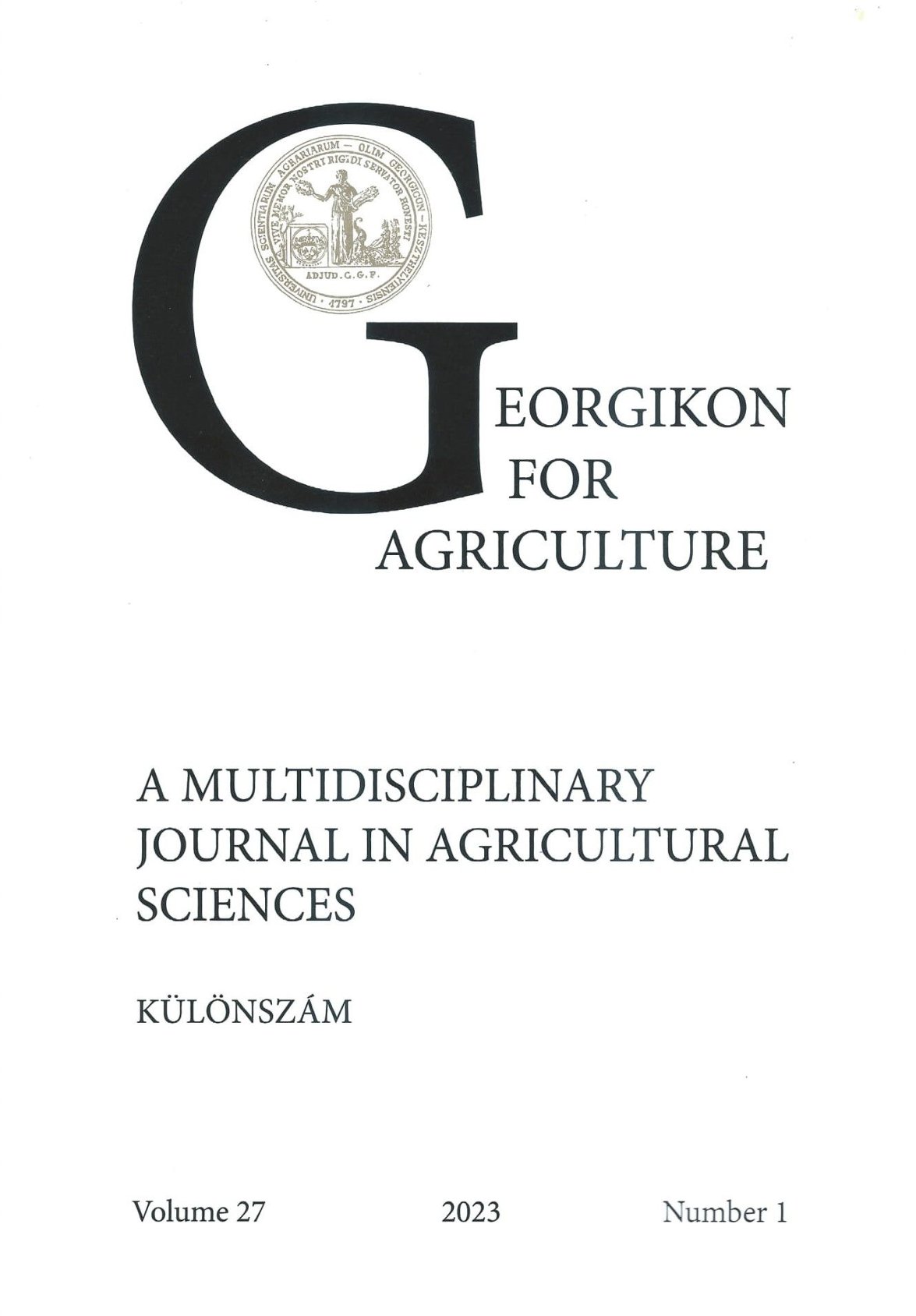Cseresznyelégy elleni endoterápiás kezelés
Keywords:
Cherry fruit fly, Rhagoletis cerasi, trunk injection, acetamiprid, flupyradifuroneAbstract
The European cherry fruit fly (Rhagoletis cerasi) can cause up to 100% damage in Hungary and in some other countries. This fly makes the crop completely unusable for export and fresh consumption. Smaller trees can be successfully protected by spraying in the intensive cultivation. But spraying is often applied in unnecessary amounts, what pollutes the environment and most of the spraying does not reach the target pests. Injection affects only the tree organisms, environmentally friendly, and we can use low doses of the active ingredient to kill pests. In our work, we select and formulate pesticides into injectable formulations, evaluate the experiment from an entomological view, and then measure the active ingredient residue in the fruit. When trees were treated with 3.96 g active flupyradifurone ingredient, we reached 99% protection against the cherry fruit fly. And when we treated the trees with 0.56 g and 1.12 g acetamiprid, the protection were 97% in both cases. The insecticidal effect was also lower with lower dose treatments. Flupyradifurone ingredient residue in the cherry crop were ranged from 51.42 ng/g to 400.37 ng/g and the acetamiprid ingredient residue were ranged from 6.6 ng/g to 176.96 ng/g, depending on the treatment dose.
References
Daniel, C. and Wyss, E. 2009. Susceptibility of different life stages of the European cherry fruit fly, Rhagoletis cerasi, to entomopathogenic fungi. Journal of Applied Entomology 133. 473-483.
European Pesticides Database 2021. https://ec.europa.eu/food/plant/pesticides/eu-pesticides-database/start/screen/mrls
Fimiani, P. 1983. Multilarval infestations by Rhagoletis cerasi L. (Diptera: Trypetidae) in cherry fruits. In Fruit Flies of Economic Importance; Cavalloro, R., Ed.; Balkema: Rotterdam, The Netherlands 52-59.
Gutermuth, Á. J. 2017. The injectability of deciduous trees. Szent István University, Faculty of Horticultural Science
Ioannou, C. S., Papanastasiou, S. A., Zarpas, K. D., Miranda, M. A., Sciarretta, A., Nestel and Papadopoulos, N. T. 2019. Development and Field Testing of a Spatial Decision Support System to Control Populations of the European Cherry Fruit Fly, Rhagoletis cerasi, in Commercial Orchards. Agronomy 9. 568. https://doi.org/10.3390/agronomy9100568
VanWoerkom, A. H., S. G. Aćimović, G. W. Sundin, B. M. Cregg, D., Mota-Sanchez, C., Vandervoort and J. C., Wise 2014. Trunk injection: an alternative technique for pesticide delivery in apples. Crop Prot. 65. 173-185, https://doi.org/10.1016/j.cropro.2014.05.017
Downloads
Published
Issue
Section
License
Copyright (c) 2023 Rita Gyuris, Csilla Sörös, Ádám Gutermuth, Árpád Szabó

This work is licensed under a Creative Commons Attribution-NonCommercial-NoDerivatives 4.0 International License.
Cikkre a Creative Commons 4.0 standard licenc alábbi típusa vonatkozik: CC-BY-NC-ND-4.0. Ennek értelmében a mű szabadon másolható, terjeszthető, bemutatható és előadható, azonban nem használható fel kereskedelmi célokra (NC), továbbá nem módosítható és nem készíthető belőle átdolgozás, származékos mű (ND). A licenc alapján a szerző vagy a jogosult által meghatározott módon fel kell tüntetni a szerző nevét és a szerzői mű címét (BY).




